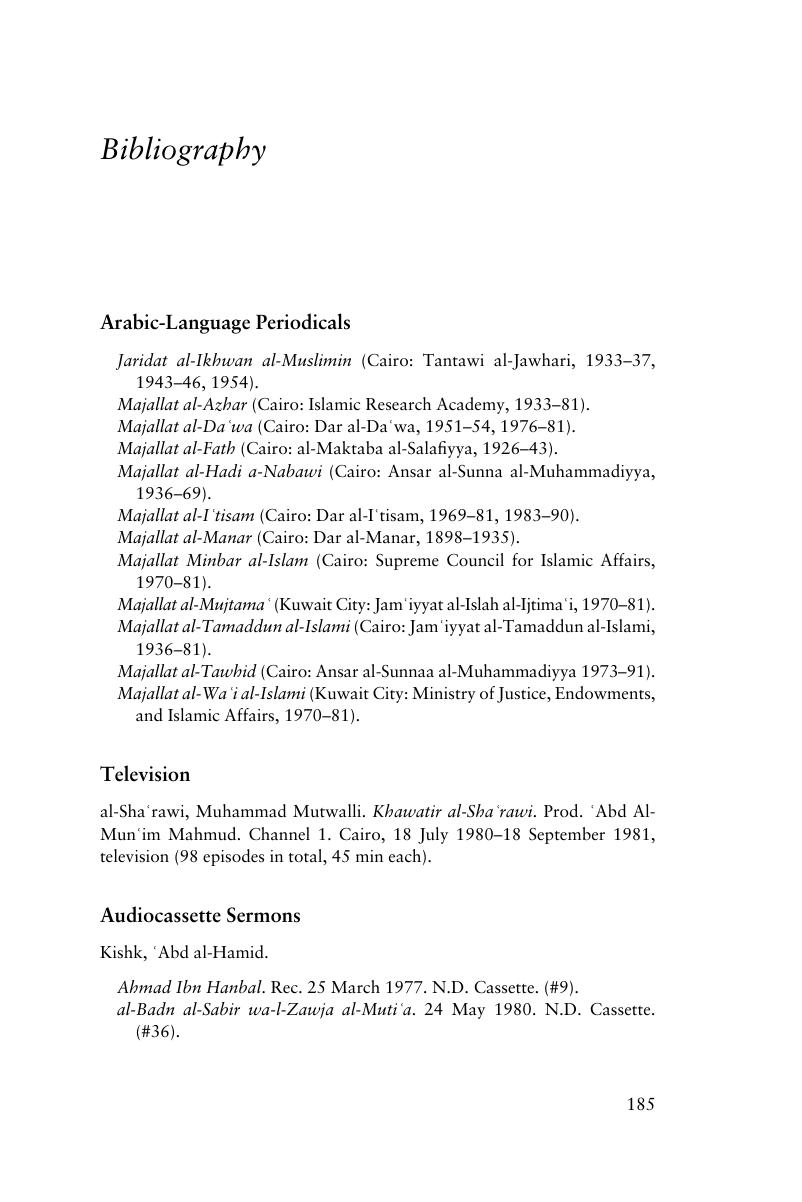Book contents
- Practicing Islam in Egypt
- Practicing Islam in Egypt
- Copyright page
- Dedication
- Contents
- Figures
- Acknowledgments
- A Note on Transliteration and Spelling
- Introduction
- 1 Mind before Matter
- 2 Currents of Religious Change
- 3 Could the State Serve Islam?
- 4 Prayer and the Islamic Revival
- 5 Beyond Fitna
- 6 The Ambiguous Legacy of the Islamic Revival
- Conclusion
- Bibliography
- Index
- References
Bibliography
Published online by Cambridge University Press: 31 December 2018
- Practicing Islam in Egypt
- Practicing Islam in Egypt
- Copyright page
- Dedication
- Contents
- Figures
- Acknowledgments
- A Note on Transliteration and Spelling
- Introduction
- 1 Mind before Matter
- 2 Currents of Religious Change
- 3 Could the State Serve Islam?
- 4 Prayer and the Islamic Revival
- 5 Beyond Fitna
- 6 The Ambiguous Legacy of the Islamic Revival
- Conclusion
- Bibliography
- Index
- References
Summary

- Type
- Chapter
- Information
- Practicing Islam in EgyptPrint Media and Islamic Revival, pp. 185 - 205Publisher: Cambridge University PressPrint publication year: 2019



